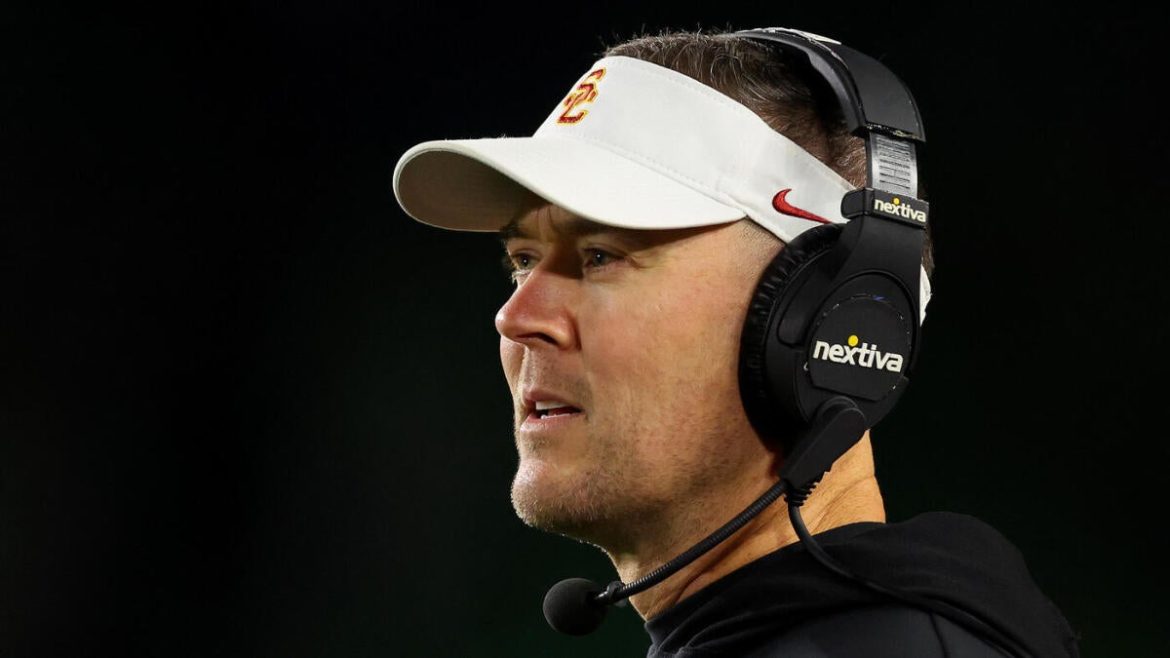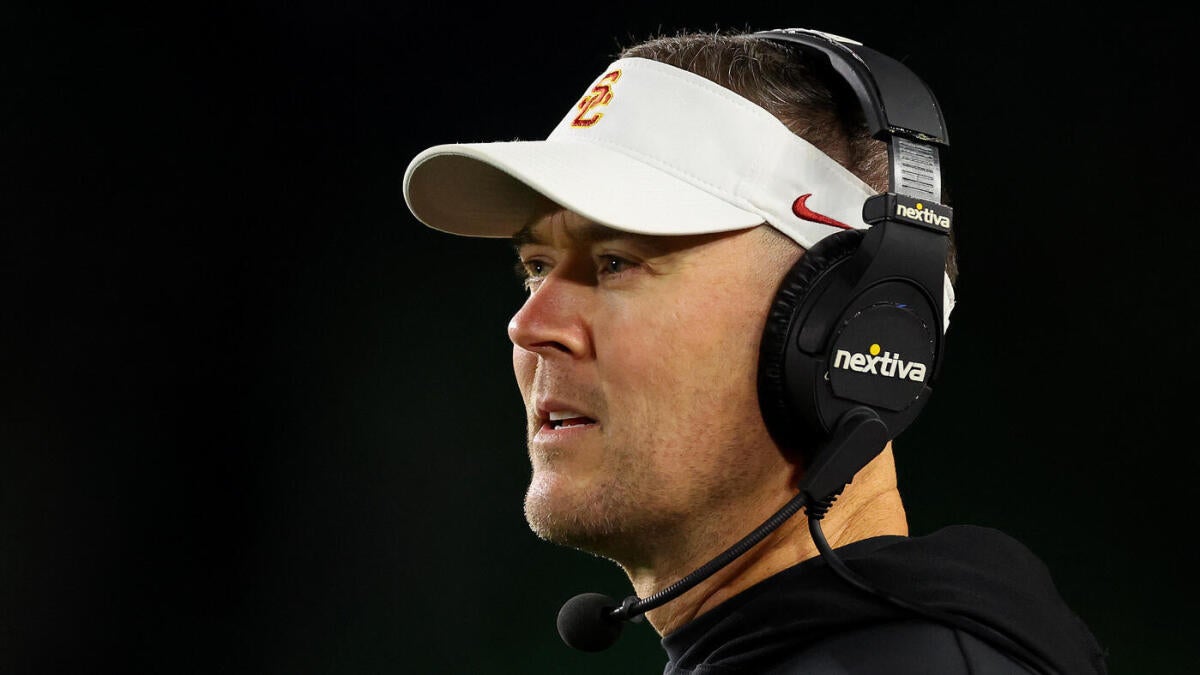The Uncertain Future of the USC-Notre Dame Rivalry Amid College Football’s Changing Landscape
The USC-Notre Dame football rivalry, a staple of college football for over a century, now stands at a crossroads. Due to evolving dynamics such as conference realignment, shifts in scheduling priorities, and broader structural changes in the sport, the continuation of this iconic matchup faces unprecedented challenges. This analysis dissects the complexities surrounding the rivalry’s future, contextualizes Lincoln Riley’s controversial stance, and explores what the ongoing transformation in college football means for historic rivalries.
—
A Historic Rivalry Confronts Modern Realities
The USC (University of Southern California) Trojans and the Notre Dame Fighting Irish have been battling on the gridiron for decades, often seen as one of the most significant intersectional rivalries, meaning it bridges different conferences, fan bases, and traditions in college football. Traditionally, this matchup has drawn considerable excitement from fans, media, and players alike, serving as a symbolic clash of two football powerhouses.
However, recent years brought seismic shifts to college football’s landscape, primarily through conference realignments. USC’s move into the Big Ten Conference, for instance, has had direct ramifications on its scheduling flexibility and priorities. Meanwhile, the uncertainty surrounding the College Football Playoff (CFP) format and potential expansion plans have caused schools to reconsider non-conference games that might impact playoff chances.
This new environment poses a massive challenge for maintaining long-standing rivalries that no longer fit easily into optimized schedules designed around conference play and strategic advantage.
—
Lincoln Riley’s Pragmatic—and Polarizing—Perspective
Lincoln Riley, USC’s head coach since departing Oklahoma, has become a central figure in the discussion about the rivalry’s future. Riley’s comments have been interpreted by many as indifferent or even dismissive toward preserving the USC-Notre Dame series if it conflicts with USC’s competitive goals.
At Big Ten Media Days and in various interviews, Riley has expressed a pragmatic understanding that football programs must adapt to a rapidly evolving landscape, suggesting that rivalry games might get sacrificed in pursuit of strategic scheduling and playoff positioning. His oft-cited phrase, “College football fans ‘gotta accept’ change,” encapsulates his stance that the traditional football calendar may give way to more practical decisions.
This approach has drawn significant backlash from fans and analysts who view the rivalry as sacrosanct, an essential element of college football’s rich heritage. Some have accused Riley of lacking appreciation for the rivalry’s emotional and historic significance, while others defend his perspective by highlighting the necessity to adapt in an increasingly competitive environment.
—
The Broader Context: Evolution and Upheaval in College Football
The USC-Notre Dame predicament is emblematic of wider upheavals facing the sport. Conference realignments have been reshaping rivalries, sometimes shelving long-standing contests. The recent suspension of the Bedlam series between Oklahoma and Oklahoma State illustrates how even regional rivalries can be affected.
Moreover, administrative and financial considerations are increasingly dominant in shaping schedules and series agreements. With schools and conferences wrestling with revenue distribution, media contracts, and playoff positioning, scheduling flexibility gains paramount importance.
The College Football Playoff expansion, set to move toward a straight-seeding model for 2025, could intensify this trend, incentivizing programs to prioritize games that enhance playoff resumes over traditional rivalries that might not carry weight in national rankings.
—
Conflicting Interests: Extension Talks and the Rivalry’s Future
Within this turbulent dynamic, USC and Notre Dame have reportedly reached an impasse regarding extending their rivalry. Notre Dame’s athletic department maintains a strong desire to preserve the annual game, considering it a cornerstone in their tradition and fan engagement. Conversely, USC has only offered a one-year extension beyond the current contract’s end after the 2025 game.
This reluctance on USC’s part stems largely from uncertainties over future CFP structures, scheduling constraints in the Big Ten, and strategic aims for positioning the program more competitively under Riley’s leadership. Additionally, offseason coaching changes and roster shifts at both programs suggest a potential reset or reimagining of priorities that might deprioritize traditional rivalry continuity.
—
Fan and Analyst Reactions: Passion Meets Pragmatism
The emotional reaction from fans has been intense. Many see the potential ending of this series as an existential loss for college football’s culture and identity. The rivalry’s cancellation or significant alteration could create a grassroots backlash, undermining fans’ loyalty and diminishing the sport’s broader appeal.
On the analyst side, opinions split between empathy for the evolving realities and harsh critique of perceived insensitivity by USC’s leadership. Some commentators use Riley’s attitude as a case study in modern college football coaching that prioritizes pragmatism and program building over tradition.
—
Impact on USC’s Program and Lincoln Riley’s Tenure
The 2024 season’s mixed results, including a 6-6 record and a 49-35 loss to Notre Dame, amplifies pressures on Riley and USC’s administration. These outcomes have spurred discussions about Riley’s long-term fit at USC and the trajectory of the program. The rivalry’s future intertwines with this narrative: sustaining the USC-Notre Dame game could boost fan enthusiasm and recruiting appeal, while ending it might signify a tougher path ahead amid broader transition.
—
Conclusion: Navigating Between Legacy and Progress
The USC-Notre Dame rivalry symbolizes not only two historic football programs but also the complex tension between longstanding tradition and the practical demands of a modernizing college football landscape. Lincoln Riley’s candid comments underscore a stark reality: in an age of conference realignments, playoff expansions, and financial imperatives, even iconic rivalries can become expendable.
Yet, the palpable fan passion, administrative desires, and cultural significance surrounding this series indicate the value of balancing progress with heritage. Whether this rivalry continues will depend on how the programs negotiate their priorities, how college football’s governing bodies manage evolving structures, and how fans reconcile the exhilaration of history with the inevitability of change.
In football’s ever-shifting terrain, such narratives remind us that the game is as much about continuity and community as it is about competitiveness and innovation. The coming decisions will set precedents impacting the soul of the sport for years to come.





